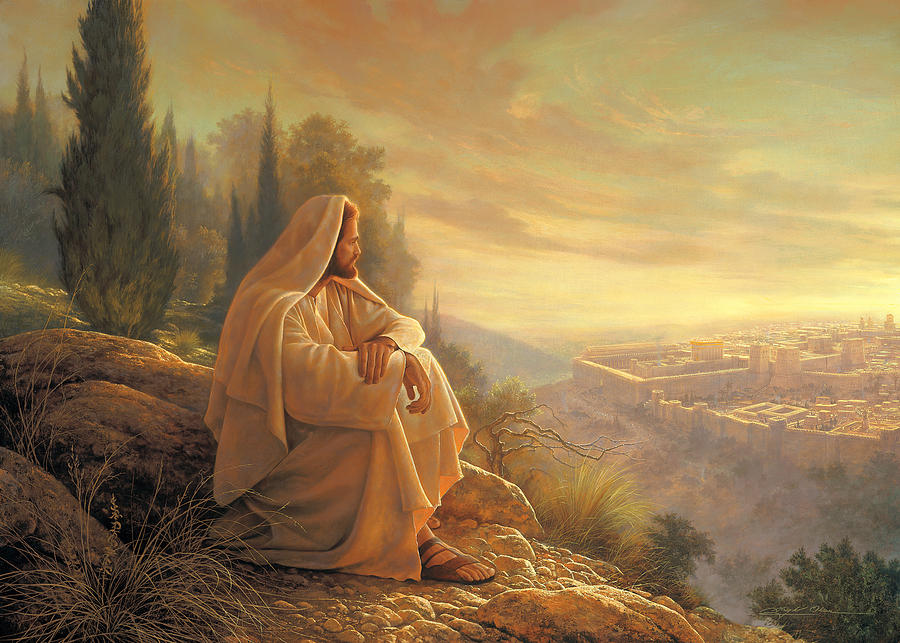To accompany your Come Follow Me study for May 22-28
In addition to reading the indicated chapters, you may wish to:
Read the applicable portions of the New Testament Institute Student Manual at
- Chapter 8: Matthew 24–25; Joseph Smith—Matthew (churchofjesuschrist.org)
- Chapter 14: Mark 11–16 (churchofjesuschrist.org)
- Chapter 19: Luke 18–22 (churchofjesuschrist.org)
Watch any or all of the following related video segments:
- Come Follow Me (May 22-28) JS Matthew 1; Matthew 24-25; Mark 12-13; Luke 21 | Prize for the Wise at Come Follow Me (May 22-28) JS Matthew 1; Matthew 24-25; Mark 12-13; Luke 21 | Prize for the Wise – YouTube
- Render unto Caesar and unto God at Render unto Caesar and unto God – YouTube
- The Greatest Commandment at The Greatest Commandment – YouTube
- Jesus Teaches about the Widow’s Mites at Jesus Teaches about the Widow’s Mites – YouTube
- The Parable of the Ten Virgins at Parables of Jesus: The Parable of the Ten Virgins – YouTube
- The Parable of the Talents at Parables of Jesus: The Parable of the Talents – YouTube
- The Parable of the Ten Virgins (by Book of Mormon Central) at The Parable of the Ten Virgins – YouTube
- The Parable of the Ten Virgins (old Latter-day Saint video) at https://www.youtube.com/watch?v=iFGjzT_lF8s&t=347s
- The Parable of the Talents (animated video) at https://www.youtube.com/watch?v=Jx8Ul9zCU_Y
- Ye Have Done It unto Me at Ye Have Done It unto Me – YouTube
- The Gospel According to Matthew (from minute 3:13:10-3:30:40) at https://www.youtube.com/watch?v=woAhReBytBk&t=6494s
- The Gospel of Luke (from minute 3:14:35-3:19:27) at https://www.youtube.com/watch?v=2PHPLApTt7Y
- The Gospel of Mark Visual Bible (from minute 1:00:18-1:12:03) at https://www.youtube.com/watch?v=BcdgY7V4jZ4&t=1190s
If you would like a Kahoot game related to this material which you could use for personal study or use with your family or your class, click here: https://create.kahoot.it/share/matthew-24-25-mark-12-13-luke-21/30b1f7a4-b6b1-4cea-b837-07f529dfa2a7. (To use it with a group, after clicking on this link, you will need to log into Kahoot, creating a free account if you have not done so previously, then click on the blue “Start” button.)
Points to Ponder in Joseph Smith-Matthew 1; Matthew 24-25; Mark 12-13; Luke 21
1. Joseph Smith’s revision of Matthew 24 was considered significant enough to be included in the Pearl of Great Price in its entirety. Why is this such an important chapter? What are the most significant revisions which Joseph Smith made in it?
2. Which of the signs foretold in Matthew 24 have already been fulfilled, which are in the process of being fulfilled, and which are yet future?

3. Besides Joseph Smith-Matthew 1, what other modern scriptural chapter adds additional information about Jesus’ answer to His apostles concerning the destruction of Jerusalem and His Second Coming, and what are the most significant points added there?
4. Occasionally we hear someone assert that the scriptures tell us that in the latter days even the very elect would be deceived. Is that true? Why or why not?
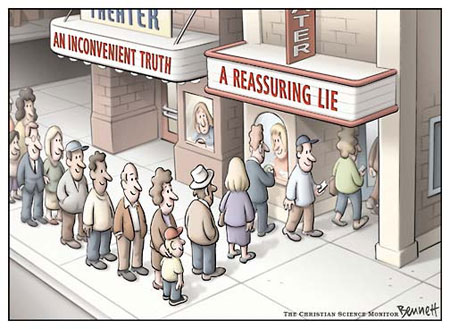
5. Though JS-M 1:40 tells us that 2000 years ago no one knew the day nor the hour of the Second Coming, isn’t it possible that by now someone could know? What would you tell a Latter-day Saint who pretended to have secret information on the subject?
6. What message did Jesus intend for His listeners to get from the Parable of the Ten Virgins and what additional applications can you see for it?
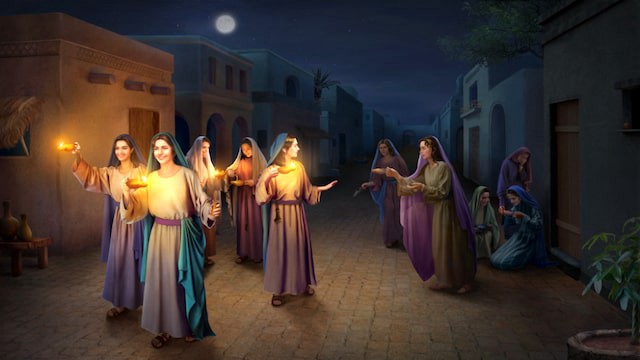
7. As you watch the old Latter-day Saint video on The Parable of the Ten Virgins at https://www.youtube.com/watch?v=iFGjzT_lF8s&t=347s, what difference do you see between the version in the video and that which is given in Matthew 25? Why do you suppose the makers of the video made the change, and what significance does it have?
8. Why were the “wise” virgins so selfish as not to be willing to share their oil?
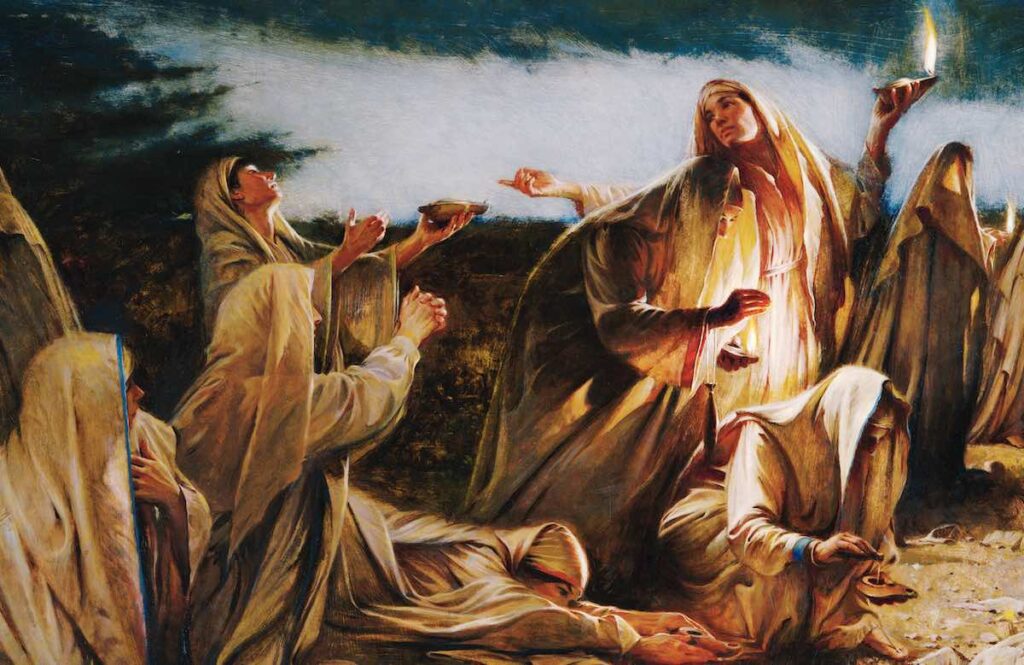
9. Are we really supposed to worry about the signs of the times and all the predicted latter-day calamities? Why or why not? Wouldn’t it be better just to love God and our fellow men and be about the business of serving in the Church and let the Second Coming occur whenever the Lord wants it to happen?
10. How would you summarize the message of the Parable of the Talents in ten words or fewer?
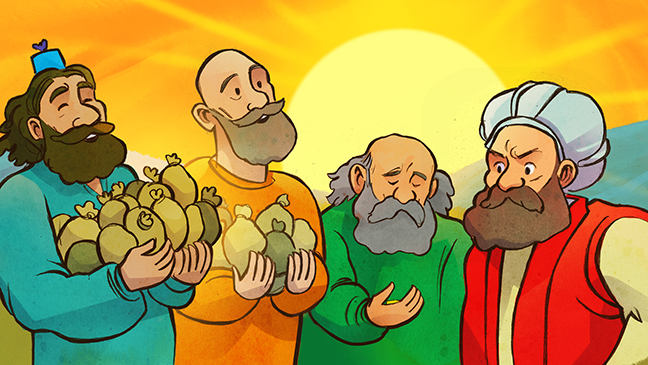
11. What difference do you see between the Parable of the Pounds and the Parable of the Talents?
12. In how few words can you summarize the message of the Parable of the Sheep and the Goats? What well-known hymn has the same message?

13. What passages in today’s reading suggest that by the time of the Second Coming, many will consider the Lord’s appearance to be overdue rather than ahead of schedule?

14. How would you succinctly summarize the message of Jesus’ comments about the poor widow’s contribution to the temple treasury?
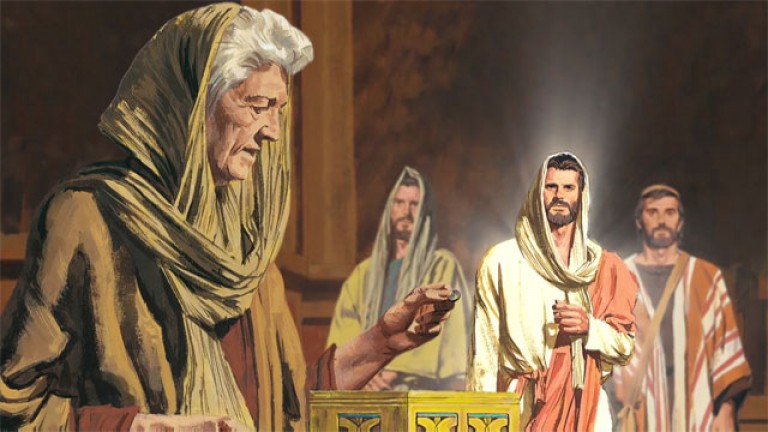
Possible Answers to Points to Ponder in Joseph Smith-Matthew 1; Matthew 24-25; Mark 12-13; Luke 21
1. Joseph Smith’s revision of Matthew 24 was considered significant enough to be included in the Pearl of Great Price in its entirety. Why is this such an important chapter? What are the most significant revisions which Joseph Smith made in it?
It is important because it outlines the work we are to do in preparation for the Savior’s Second Coming, reveals the signs which will precede and accompany it so we cannot be caught unawares, and teaches us how we can be safe from the trials, tribulations, and deceptions which will abound.
The most important revisions Joseph Smith made seem to be:
a. To clarify that in this chapter Jesus is responding to two questions: (1) What would precede and accompany the destruction of the Jewish temple and people within a few decades and (2) what would precede and accompany His return in the latter days.
b. To reorder material from several of the verses in Matthew 24 to make it clearer which pertained to which era. The Prophet also expanded upon several of those verses.
2. Which of the signs foretold in Matthew 24 have already been fulfilled, which are in the process of being fulfilled, and which are yet future?
Fulfilled:
- Matthew 24:2; JS-M 1:2-3: Not one stone of the Jewish temple left upon another.
- Matthew 24:5, 11; JS-M 1:6, 9: False Christs and prophets anciently who deceived many.
- Matthew 24:9-10; JS-M 1:7-8: Persecution and martyrdom of early apostles
- Matthew 24:15; JS-M 1:12: “Abomination of desolation” or destruction of the temple and of Jerusalem by the Romans.
- Matthew 24:16-20; JS-M 1:13-20: Faithful Christians escape to Pella, in the mountains across the Jordan.
In process of fulfillment:
- Matthew 24:23-24; JS-M 1:21-22: More false Christs and false prophets endeavoring to deceive the faithful.
- Matthew 24:6-7; JS-M 1:23, 28: Wars and rumors of wars
- Matthew 24:28; JS-M 1:27: Gathering of the elect from the four quarters of the earth into The Church of Jesus Christ of Latter-day Saints
- Matthew 24:7; JS-M 1:29: Famines, pestilences, earthquakes
- Matthew 24:12; JS-M 1:30: Rampant iniquity; love of men waxing cold. But the faithful are not overcome.
- Matthew 24:14; JS-M 1:31: Gospel being to be preached in all the world prior to the Second Coming
Yet future:
- JS-M 1:32: Another “abomination of desolation,” presumably great destruction
- Matthew 24:48; JS-M 1:51: Some among the faithless will evidently pronounce the Second Coming as overdue, as they did among the Nephites prior to His first coming to them.
- Matthew 24:29; JS-M 1:33: Sun and moon to be darkened, stars to fall from heaven, and the powers of heaven to be shaken
- Matthew 24:30-31; JS-M 1:30-31: Appearance of the sign of the Son of man in heaven and His coming in glory with His angels
- JS-M 1:37: At the Second Coming, angels will gather “the remainder of his elect from the four winds, from one end of heaven to the other.” This may be the same event as the catching of the righteous up to meet the descending Savior referred to in Matthew 24:40-41 and JS-M 1:44-45.
- Matthew 24:14; JS-M 1:31, 55: Destruction of the wicked, though not of the earth itself.
3. Besides Joseph Smith-Matthew 1, what other modern scriptural chapter adds additional information about Jesus’ answer to His apostles concerning the destruction of Jerusalem and His Second Coming, and what are the most significant points added there?
Doctrine and Covenants 45:16-60 gives us an additional 45 verses that quote Jesus’ answer to the same question as Matthew 24 records. In addition to confirming much of what is quoted in Matthew 24 and Joseph Smith-Matthew 1, this section:
- Speaks clearly of a remnant of Israel being scattered among all nations, to be gathered again when the times of the Gentiles are fulfilled. (45:24-25)
- Shows that the Savior spoke clearly of the latter-day restoration of the gospel. (45:28-30)
- Exhorts the saints to “stand in holy places” (45:32), rather than in the more nebulous “holy place” of Matthew 24:15.
- Urges the saints to “be looking for the for the great day of the Lord to come, even for the signs of the coming of the Son of Man.” (45:39)
- Is clearer about the latter-day gathering (45:43)
- More graphically describes the Second Coming itself and the accompanying resurrection of the righteous. (45:44-54)
- Speaks of the binding of Satan during the Millennium. (45:55)
- Speaks of other Millennial conditions. (45:58-59)
4. Occasionally we hear someone assert that the scriptures tell us that in the latter days even the very elect will be deceived. Is that true? Why or why not?
Matthew 24:24 and the corresponding verse in Joseph Smith-Matthew tell us that in the latter days there will be “false Christs and false prophets” showing great signs and wonders “insomuch that, if possible, they shall deceive the very elect, who are the elect according to the covenant.” We find that a similar situation was to prevail prior to the Roman destruction of Jerusalem (Matthew 24:11). But the JST there adds: “But he that remaineth steadfast, and is not overcome, the same shall be saved.” The implication seems to be that if the “elect according to the covenant,” or Church members, are faithful they need not be deceived, but that mere membership in the Church will not be enough. And JS-M 1:37 promises, “And whoso treasureth up my word, shall not be deceived.” In short, though all the powers of the adversary will be arrayed against the righteous to deceive them, it is not possible to do so if they will be steadfast in qualifying for the companionship of the Holy Spirit and follow its promptings.
5. Though JS-M 1:40 tells us that 2000 years ago no one knew the day nor the hour of the Second Coming, isn’t it possible that by now someone could know? What would you tell a Latter-day Saint who pretended to have secret information on the subject?
You could quote D&C 49:7, which tells us not only that no man nor the angels of heaven then knew the day nor the hour, but neither “shall they know until he comes.”
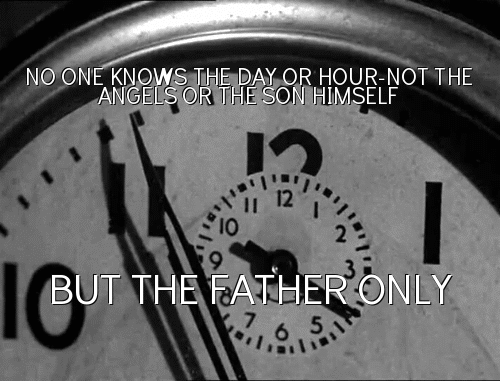
6. What message did Jesus intend for His listeners to get from the Parable of the Ten Virgins and what additional applications can you see for it?
Jesus Himself summarized the message as, “Watch therefore, for ye know neither the day nor the hour wherein the Son of man cometh.” (Matthew 25:13.) But it can apply to punctuality and preparedness in a lot of settings. For example, we need to store up gospel knowledge and live worthy of inspiration so we’ll always be ready to uplift someone in need or answer a question someone might have about our faith. We need to be financially prepared against hard times. We need to prepare lessons ahead of time that we are going to teach in case some emergency comes up and we don’t have time to prepare at the last minute. Etc.

7. As you watch the old Latter-day Saint video on The Parable of the Ten Virgins at https://www.youtube.com/watch?v=iFGjzT_lF8s&t=347s, what difference do you see between the version in the video and that which is given in Matthew 25? Why do you suppose the makers of the video made the change, and what significance does it have?
The video follows the Joseph Smith Translation, where in Matthew 25:12, instead of saying, “I know you not,” the JST has the Savior saying, “You know me not.” The Lord knows us all perfectly. But it is our opportunity and responsibility to come to know Him.
8. Why were the “wise” virgins so selfish as not to be willing to share their oil?
D&C 45:56-57 suggests that the oil in the parable symbolizes the Holy Spirit, which one is not able to share directly with another. Each has to secure it for himself.
9. Are we really supposed to worry about the signs of the times and all the predicted latter-day calamities? Why or why not? Wouldn’t it be better just to love God and our fellow men and be about the business of serving in the Church and let the Second Coming occur whenever the Lord wants it to happen?
Certainly, the Lord doesn’t want us to worry about them. But He does ask us to be aware of them and be prepared. In D&C 45:39, He says specifically, “He that feareth me shall be looking forth for the great day of the Lord to come, even for the signs of the coming of the Son of Man.” Rather than trouble us, the signs can reassure us that the Lord is in control, that He will protect the righteous, and that the great day of Millennial peace is near.
10. How would you summarize the message of the Parable of the Talents in ten words or fewer?
How about: “Equal effort with unequal opportunities brings equal reward”? Another message, of course, is the same as that of the Parable of the Ten Virgins: The Lord may come when we least expect it, and we’d better be ready!
11. What difference do you see between the Parable of the Pounds and the Parable of the Talents?
In the Parable of the Pounds, each worker was given the same amount as a stewardship and each was rewarded commensurate with his production. In the Parable of the Talents, the workers were given varying amounts to manage, and equal effort was rewarded equally.
12. In how few words can you summarize the message of the Parable of the Sheep and the Goats? What well-known hymn has the same message?
How about: “Jesus takes personally our treatment of others”? The corresponding hymn, of course, is “A Poor Wayfaring Man of Grief.”
13. What passages in today’s reading suggest that by the time of the Second Coming, many will consider the Lord’s appearance to be overdue rather than ahead of schedule?
One is Matthew 24:48, which suggests there could be “evil servants” in the last days who will say, “My lord delayeth his coming.” Another would be the Parable of the Ten Virgins, in Matthew 25:1-13, in which the bridegroom “tarried” and didn’t show up until midnight, well after the young ladies expected him.
14. How would you succinctly summarize the message of Jesus’ comments about the poor widow’s contribution to the temple treasury?
How about: “God is more impressed with how little we have left than with how much we give”? Or maybe: “Sacrifice doesn’t count unless it hurts.”
